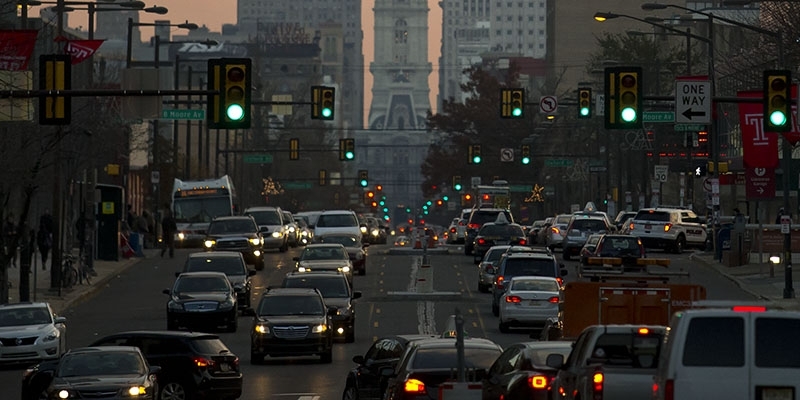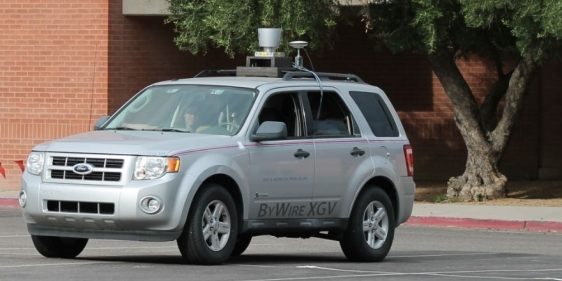Tested with human drivers, self-driving car calms traffic
Based on model predictions and computer simulations by Associate Professor of Mathematics Benjamin Seibold, he and fellow researchers recently confirmed experimentally that self-driving cars can help prevent traffic jams when placed among human-operated cars.
A live experiment recently confirmed for the first time what Temple researchers had predicted based on traffic models and computer simulations: The presence of just a few properly controlled autonomous vehicles can eliminate stop-and-go traffic jams caused by human drivers—along with the accident risks, fuel inefficiencies and increased pollution that such congestion causes.
The finding by a collaborative team of researchers at Temple and three other universities indicates that self-driving cars and related technology may be even closer to revolutionizing traffic control than previously thought.
The research, funded by the National Science Foundation’s Cyber-Physical Systems program, included the development of models and computer simulations by Associate Professor of Mathematics Benjamin Seibold’s lab.
“Our simulations indicated that it would be possible to eliminate phantom traffic jams if just one in every 20-25 vehicles were self-driving,” Seibold said, referring to the phenomenon that occurs when drivers slow or stop on the highway for no discernible reason, causing backups.
“The instabilities that human drivers unintentionally introduce by their driving behavior can be canceled by a single well-controlled autonomous vehicle,” Seibold added. “However ... the results of any such simulation must be taken with a grain of salt because of all of the unpredictable ways people actually drive in the real world. Ultimately, only an experiment involving real human drivers can reveal whether the ideas work in practice.”
Seibold’s predictions were put to the test—and confirmed—on a circular track in Tucson, Arizona. During the test, researchers demonstrated that a single self-driving car, its pace controlled via algorithms based on Seibold’s models and simulations, can smooth the flow of 22 other cars driven by humans. The research also showed that eliminating stop-and-go traffic waves, or jamitons, could reduce total fuel consumption by up to 40 percent.
Due to technological, market and policy constraints, it will be many years before fully autonomous cars make up a majority of motor vehicles. But understanding and predicting the near-term scenario, when just a few self-driving cars will be intermixed with mostly human drivers, is even more challenging.
“The proper design of autonomous vehicles requires a profound understanding of how humans will react to them,” Seibold said. “Traffic experiments like the one we conducted play a crucial role in understanding this interplay of human and robotic agents.”
The researchers next plan to study the impact of self-driving cars in denser traffic, with more freedoms, such as being able to change lanes, granted to the human drivers.
In addition to Seibold, Benedetto Piccoli of Rutgers University-Camden, Jonathan Sprinkle of the University of Arizona, Tucson and Daniel B. Work of University of Illinois Urbana-Champaign served as principal investigators in the study.
—Bruce Beans


